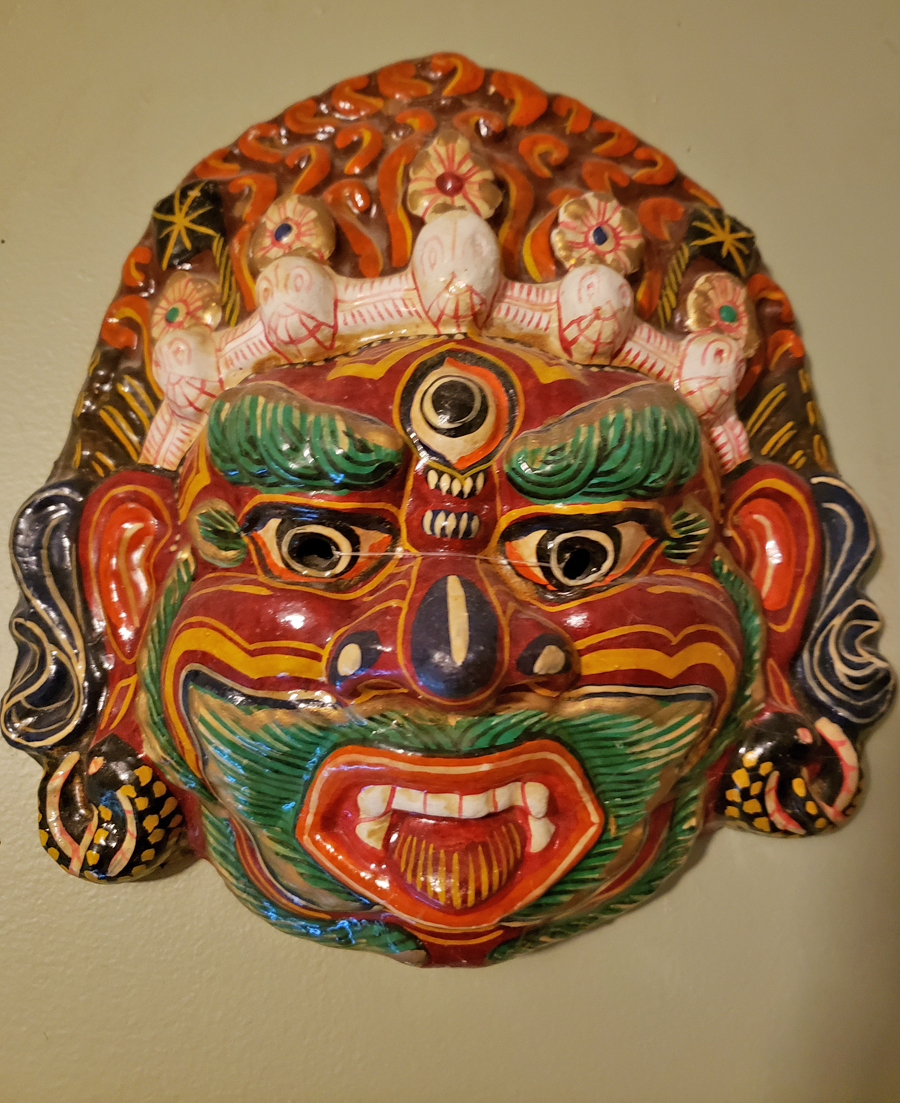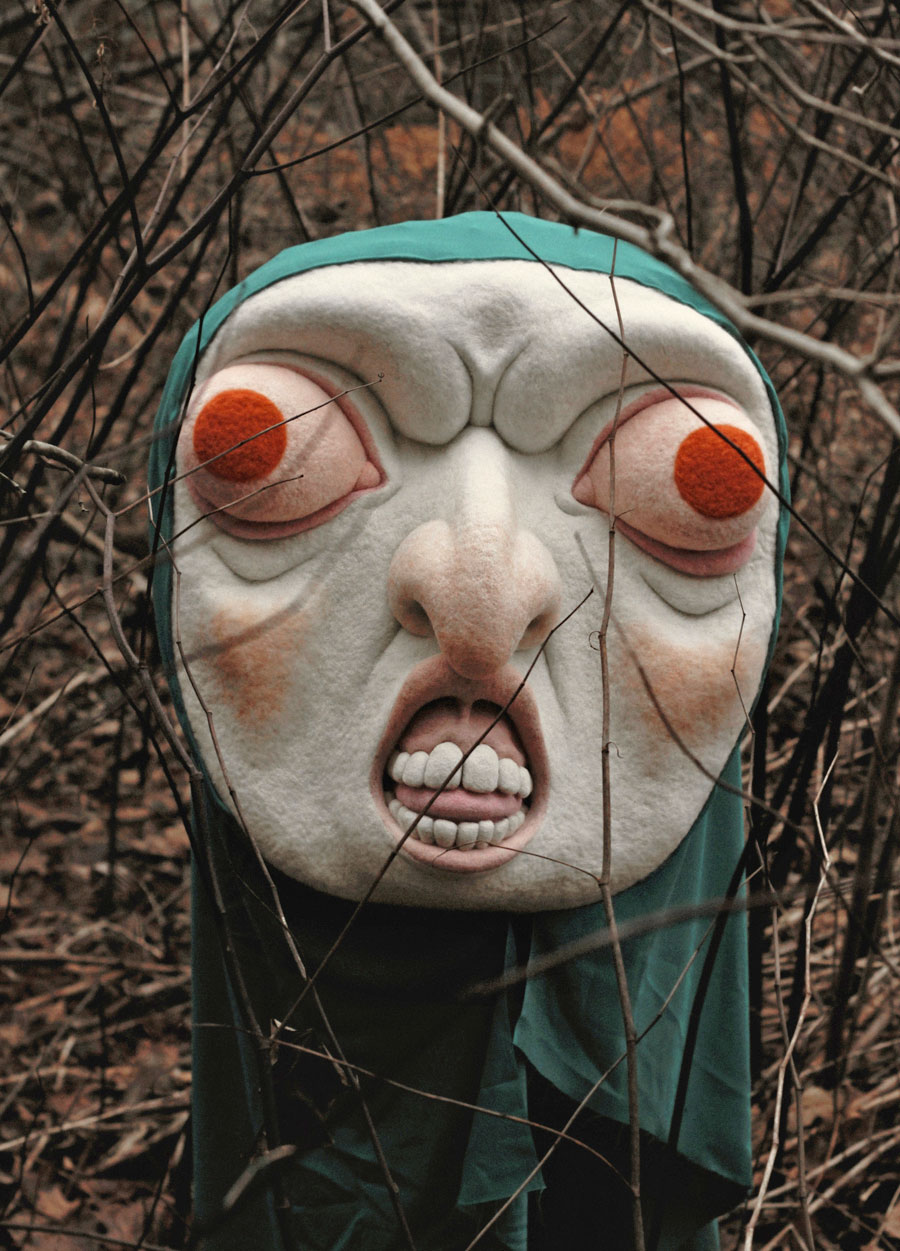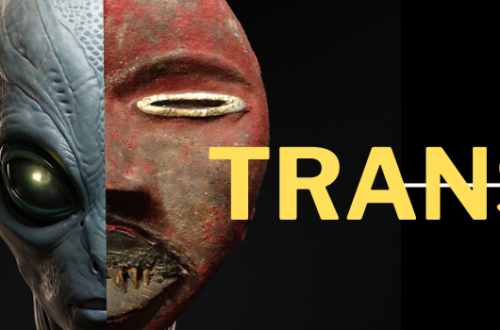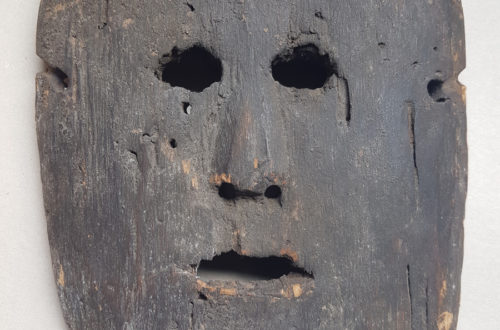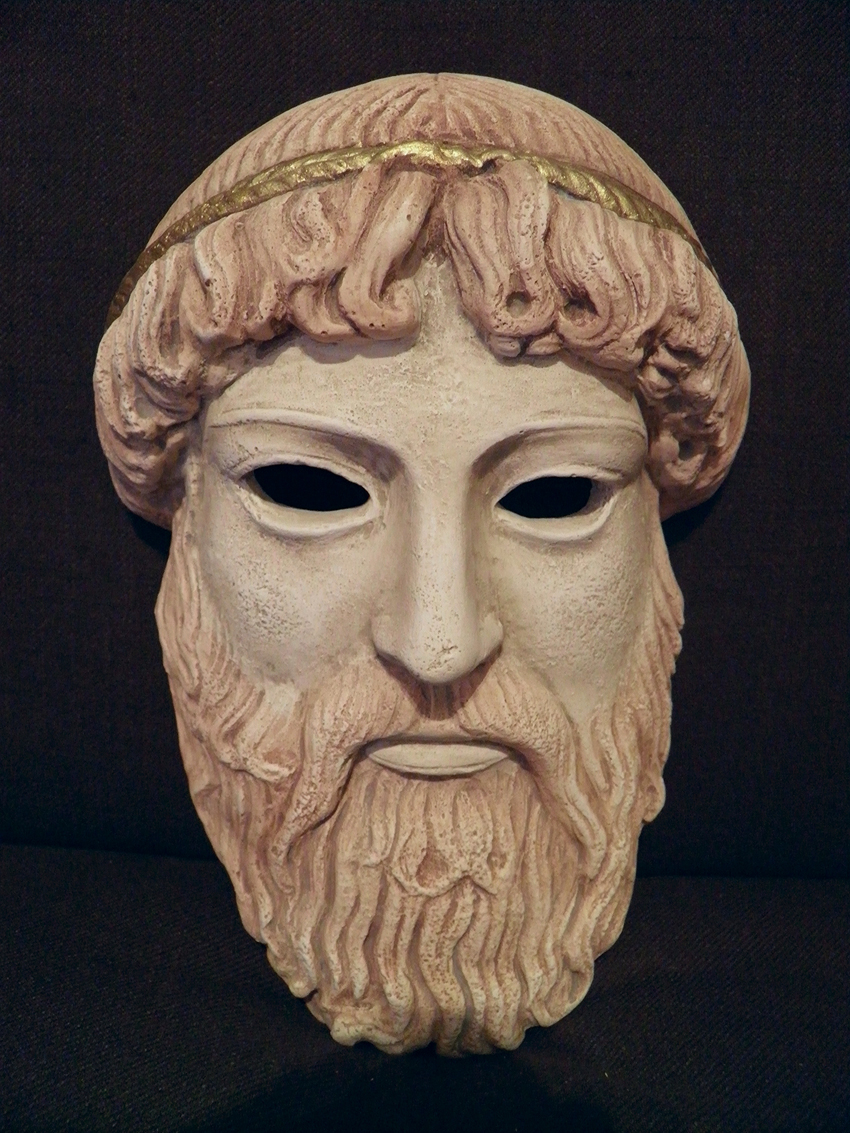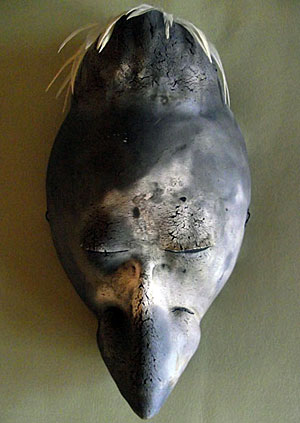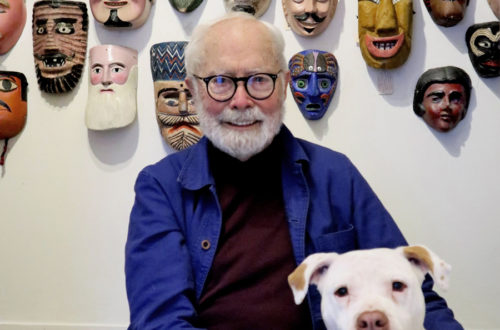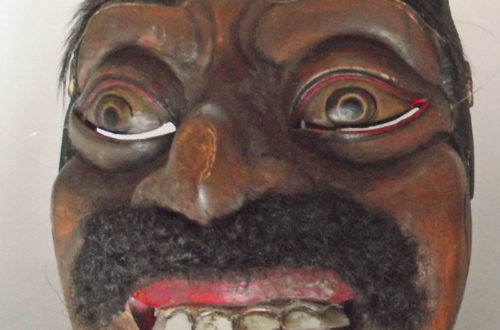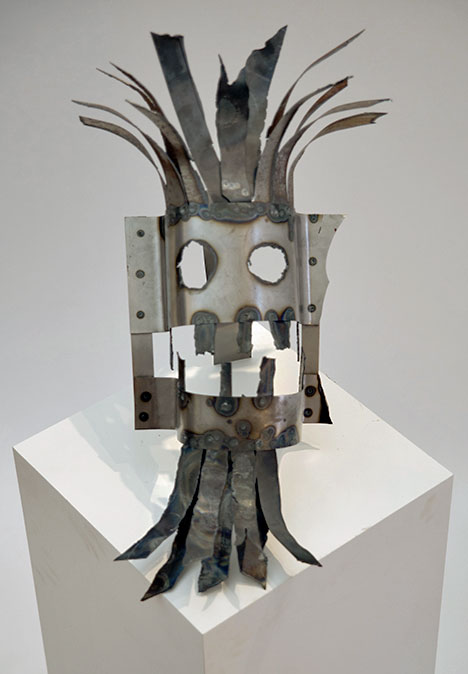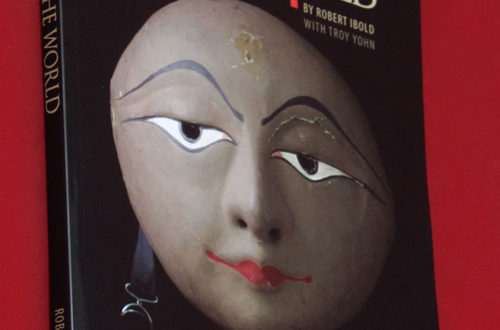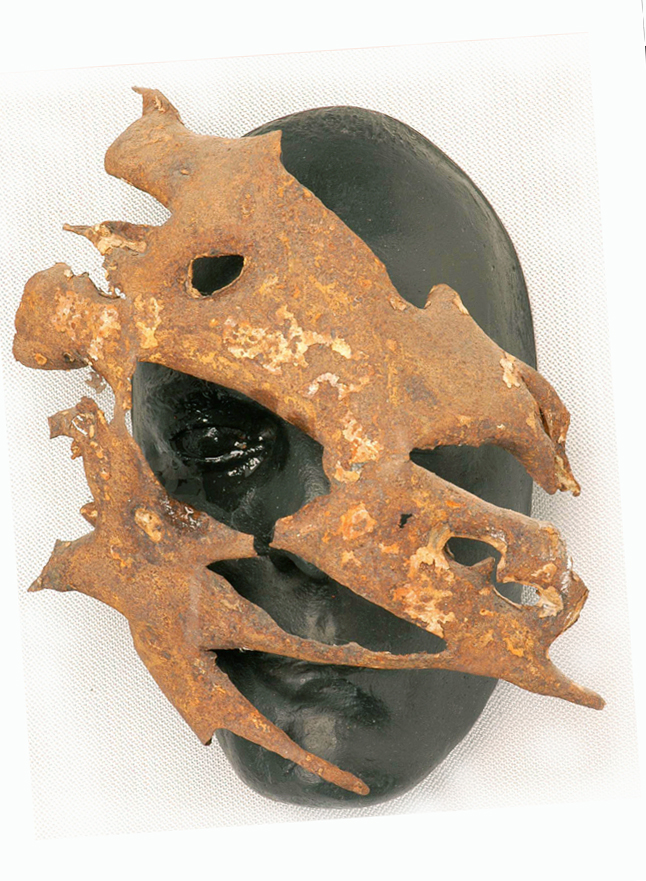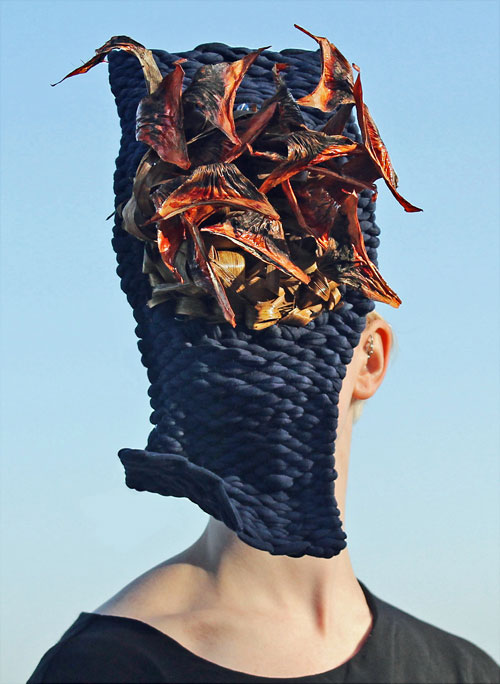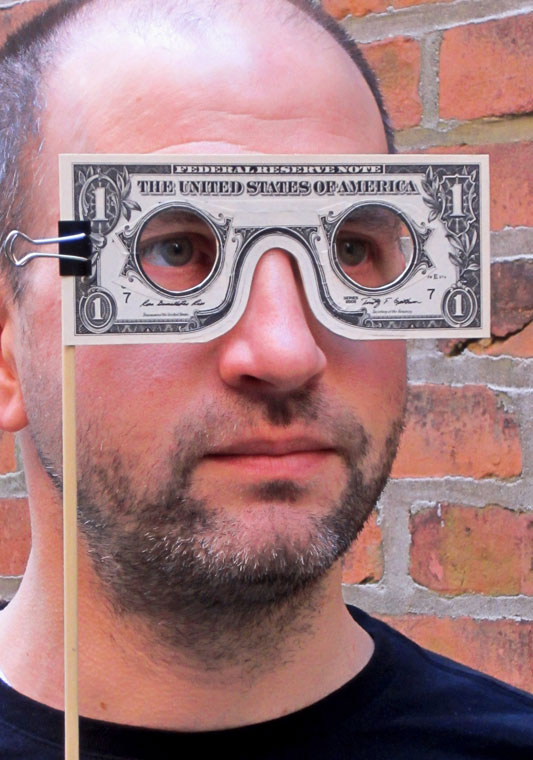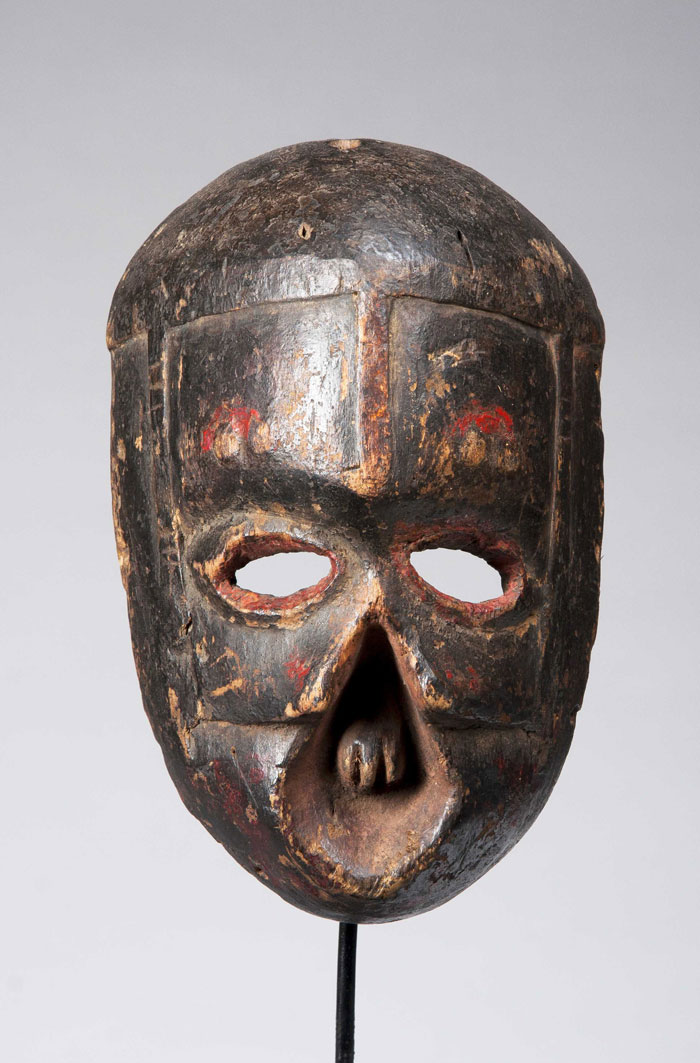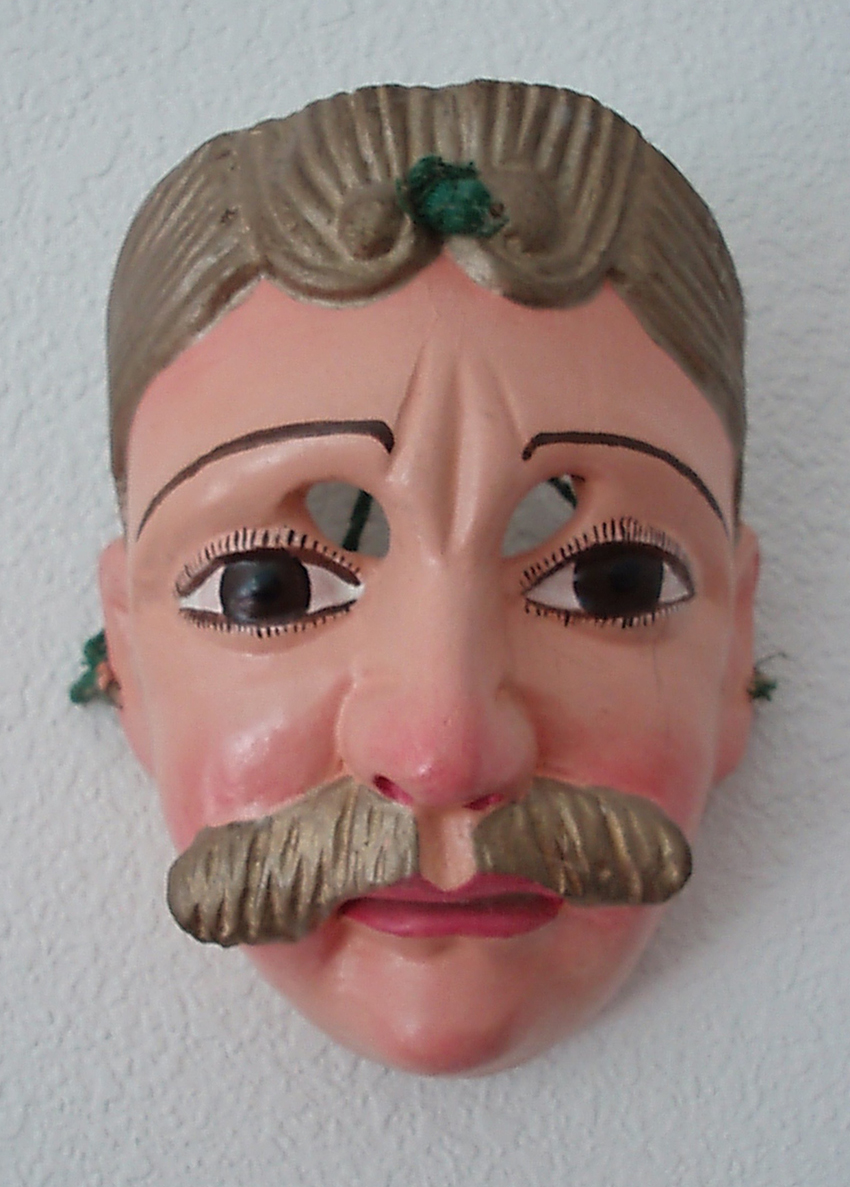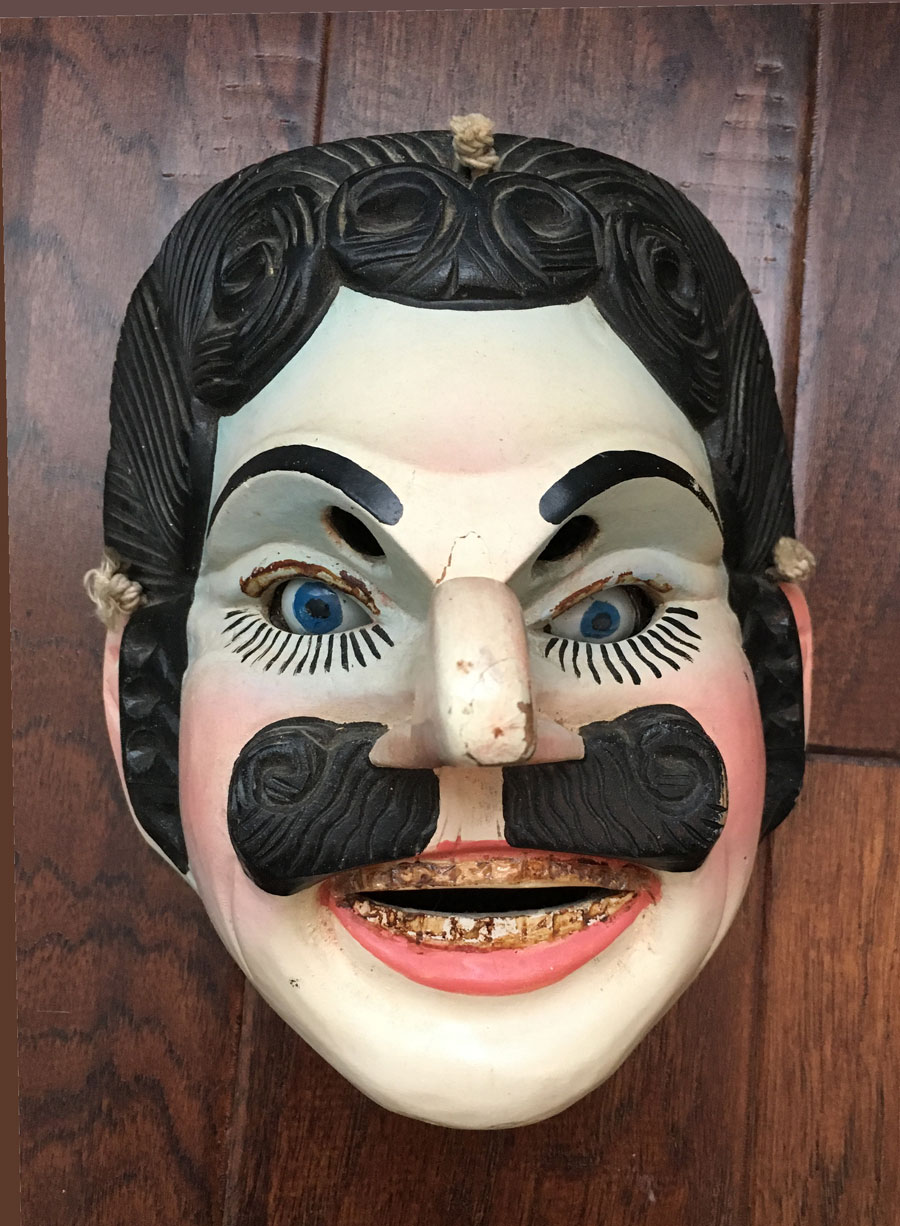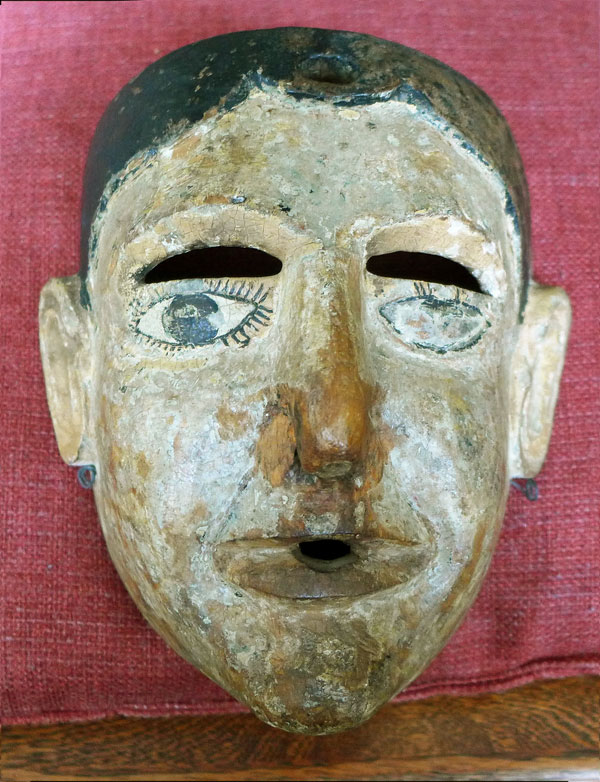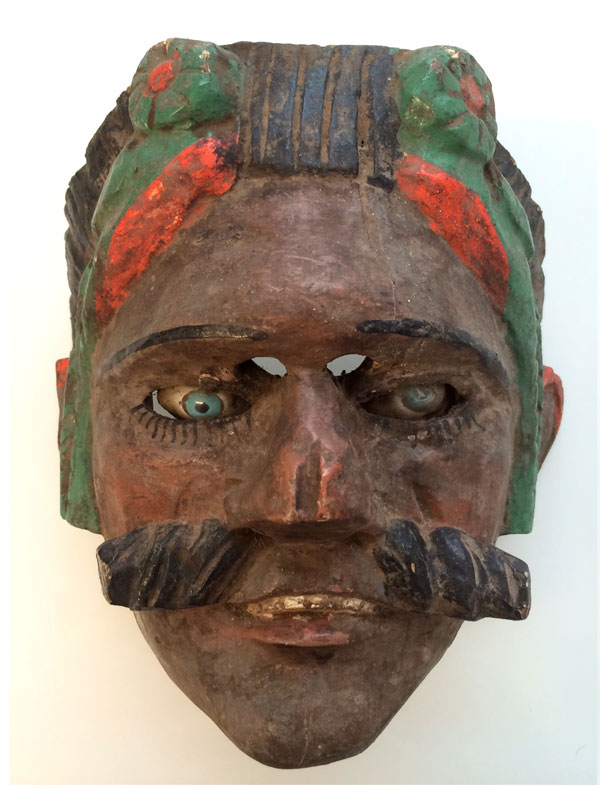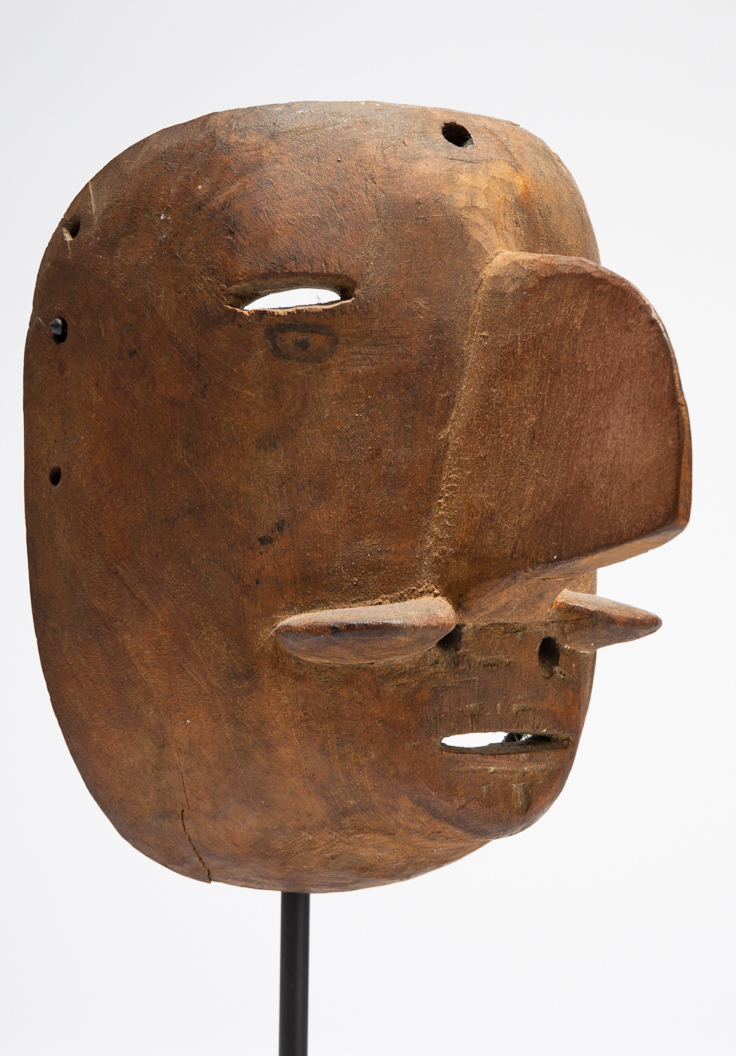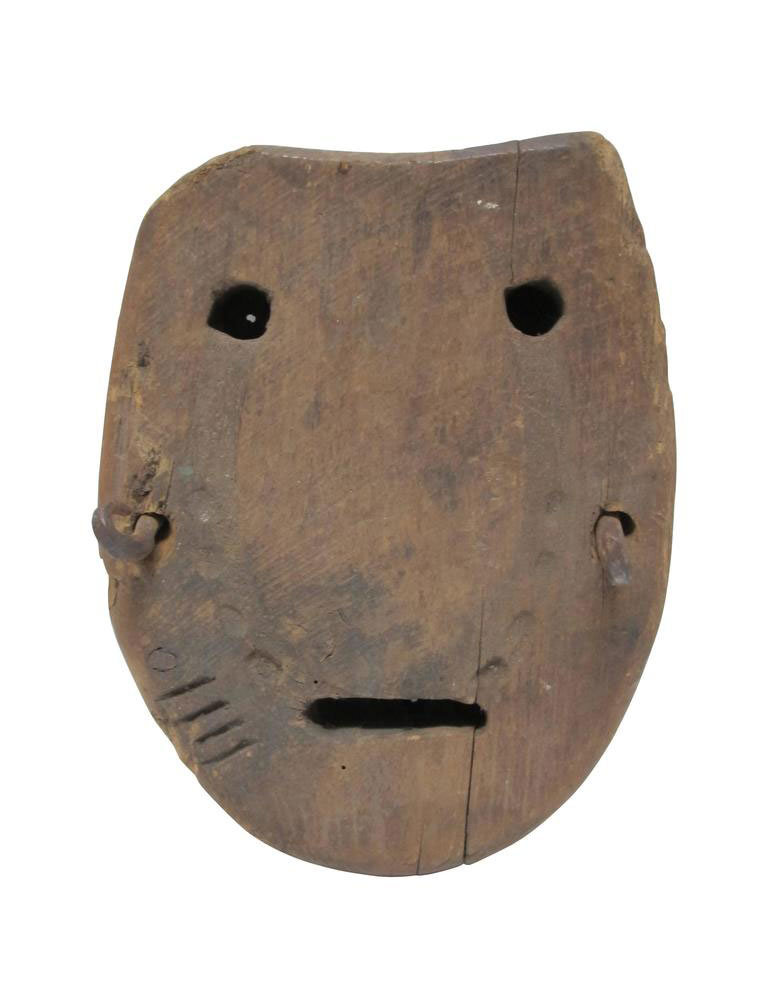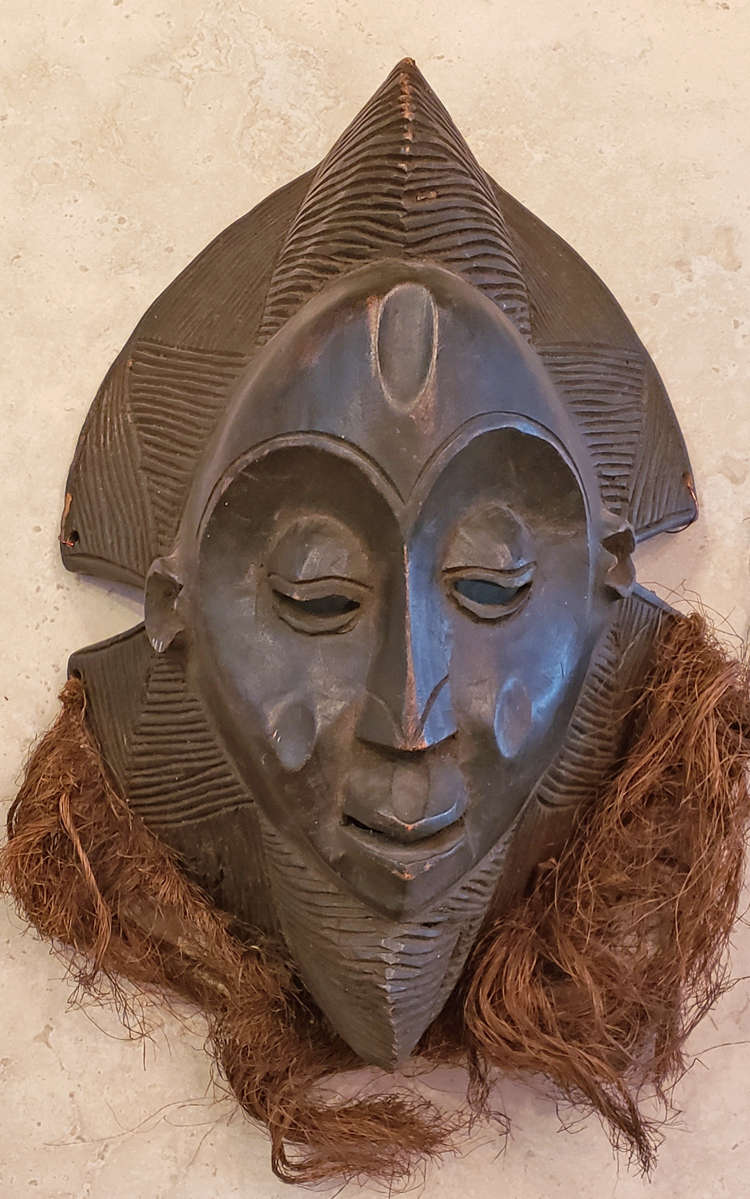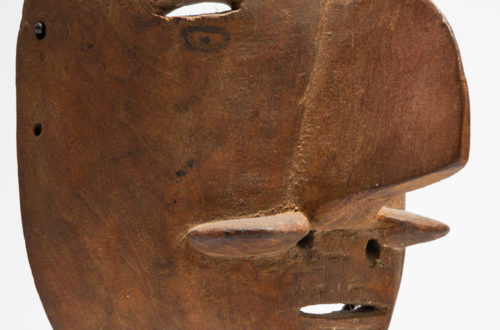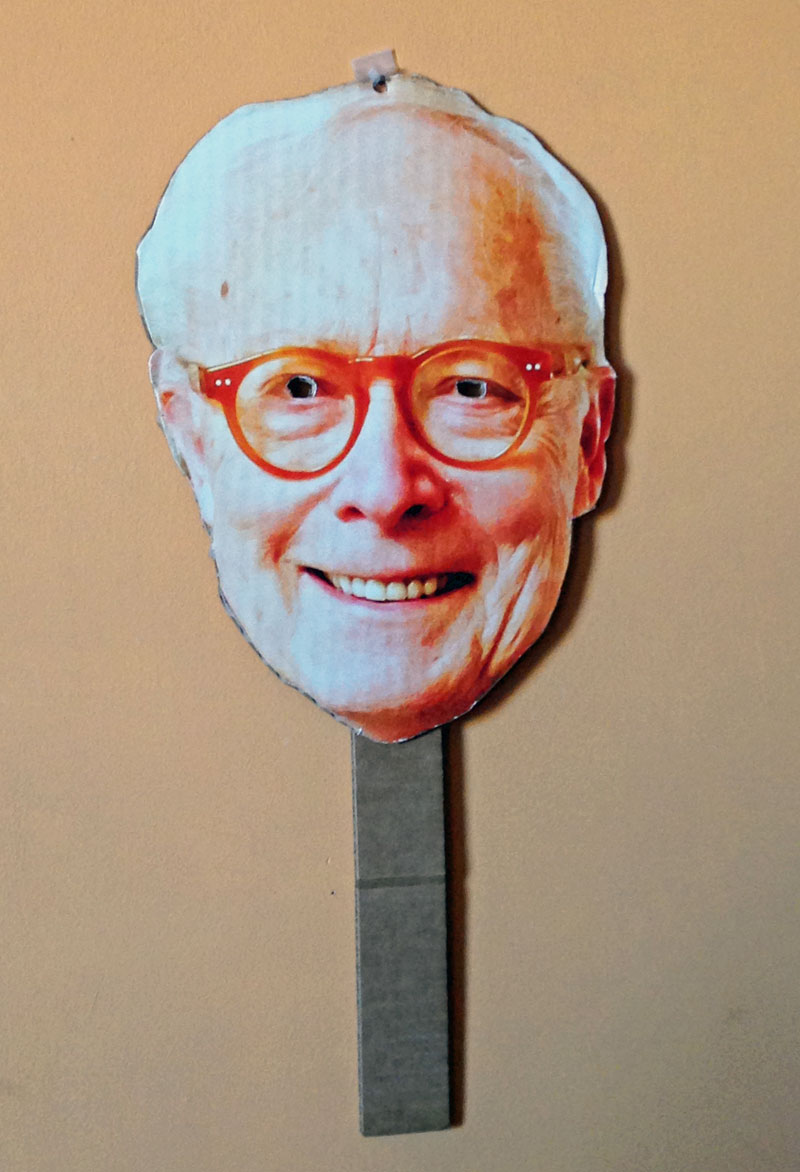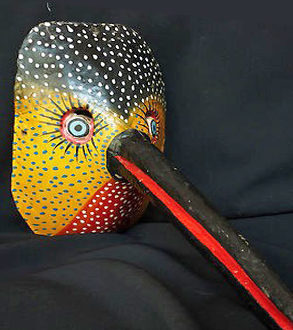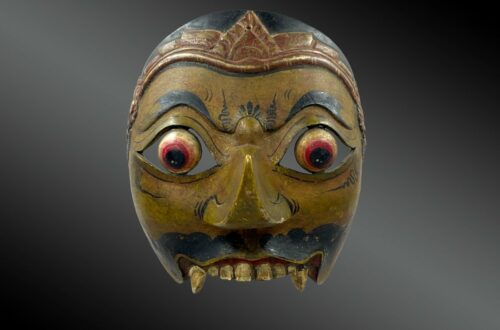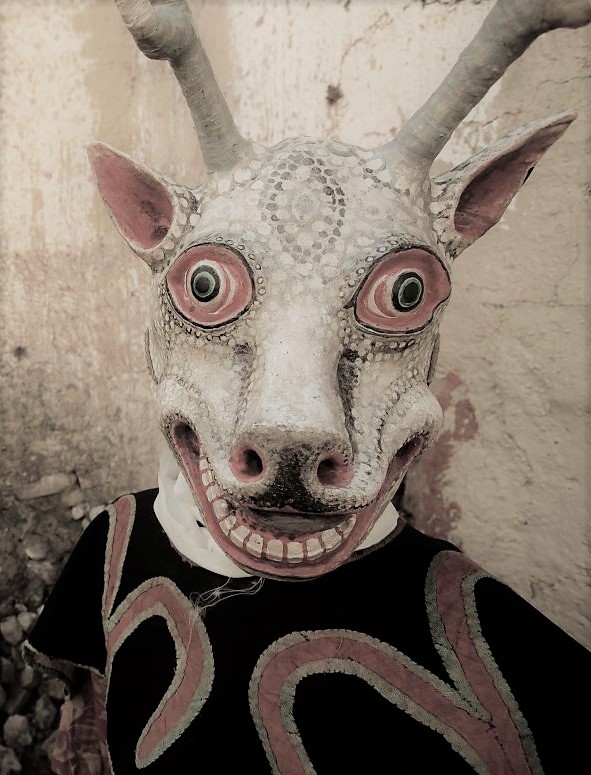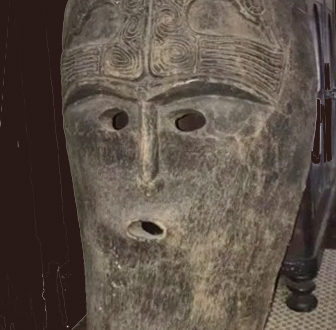Q: I think this is a mask from India/Himalayas, possibly of the deity Mahakala. Wanted to know more! I inherited a collection, and am interested in this one from Asia. Mattie, 1715 A: You are right. I posted one almost exactly like yours back in 2018. It wasn’t quite as nicely painted and had been used. Please take a look at it. https://dev.masksoftheworld.com/nice-mahakala-mask-from-tibet/ These artistic papiermache masks are made by monks for ceremony… and income for the monastery from generous tourists. A-
-
-
Repros of ancient masks
Reproductions of old masks that were actually worn in theater performances (or copied by ancient Romans over 2000 years ago) are available for very little cost. Different characters, gods and Roman emperors are made by skilled commercial artists around the world. I think that anyone who enjoys this site should have at least one of these affordable sculptures on a wall in their home. My good friend, who is a retired classics professor, believes the two masks shown here are poor reproductions. I think they are still quite decorative, but if you are a classics scholar, search more carefully than I did. C
-
Paintball protective mask
This is a Flex 8 Goggle system that offers integrated vents on the jaw that have been strategically designed to encourage deflections and bounces. Features include… Spectra Lens offering 260° field of vision Dual Pane Thermal Lens Dual Fusion Co-molding technology creates this unique venting system Smaller profile to encourage deflections and bounces Includes removable visor Accepts Vortex 2 fan system You can buy different kinds of paintball masks (new and used) for little money. This is true of many other kinds of protective masks for goalies, soldiers, wrestlers, sword fighters, divers, firemen, etc. Sometimes there are older versions that look much different and can be very desirable to serious…
-
Masks as art
Q: Thought you might like to see this steel mask which I made some years ago. The steel came from an area that had been subjected to a cluster bomb attack. In this case the mask doesn’t protect: rather it shows the fragility of the wearer. Steve, 1692 A: I’ve always had some interest in cultural anthropology, but I was drawn to mask collecting mainly because they combine the two most important art forms: sculpture and painting. Your piece would be called wall sculpture because it is way more than just decorative art. It is fine art, and it also has meaning. Many of the masks shown on this site…
-
Bryan Stevens, 1944-2020
It was about 40 years ago that I bought my first mask (Mexican) at a flea market. A few years later I met Bryan who lived in the neighboring town of York, PA, and he really got me excited about collecting. Though he was a psychiatrist by profession, he curated one of the most important Mexican mask collections in the world. He was always generous with his time and taught me a great deal about the folk art and anthropology of Mexico. He was also kind enough to write the preface to “Masks of the World,” a book written by me and Troy Yohn in 2015. I will greatly miss…
-
Authentic new Guatemalan masks
Q: Attached are two views of mask made by Moises Lopez, Tactic, Guatemala, and one of his unfinished masks. I like unfinished mask and will purchase them if I can convince the mask maker to give one up before it is painted. I also have some masks that were purchased in Ecuador, Peru, Guatemala, and most are from Mexico. Some are gifts, some bought from make, some are tourist, some not. Janet Brody Esser confirmed Michoacan masks, but no estimate of value. What would it cost to appraise them? Jeri, 1686 A: The book “Masks of the World” describes in detail how authenticity affects the value of masks. Most valuable…
-
Help needed for fine mystery mask
Q: I recently bought this mask. Its about 20 cm tall. Looks real old and used but I don’t know where its from or from witch culture it is?. I bought it at an auction and paid 400 euro for it. Niek, 1659 A: Niek is a collector of PNG masks. I think he can tell what pre-contact usage looks like. This mask was carved with bones, shells or stone fragments… not a steel tool. But after a long search I have found nothing. Certainly 400 euros will be a great bargain if we can identify it. Please try to help us! Niek will be so appreciative. A?
-
Tourist masks
Q: I just received this mask as a gift. I was told it came from a collector in Canada, but it looks African to me. Rick, 1650 A: Many of the people who write to the Mask Man have been given a mask, found one, or bought an “old one” cheap. They are usually hoping it will be worth something. I have to disappoint them, hopefully, in a nice way. It would be better the next time if they bought tribal art for beauty rather than value. Other visitors to MasksoftheWorld are collectors and would probably not be interested in today’s blog. Rick has a mask that doesn’t resemble the…
-
Rare animal mask from Panama
Q: Would you know more about this straw mask. It reminds me of an African dog mask. Very comfortable to wear. Not sure if it represents a zebra or a monkey. Looking forward to your answer. Paule, 1649 A: I would say this mask was made by Indians from the forests of Panama, possibly the Embera or the Wounaan people. Both tribes often weave animal masks out of the same natural materials they use for baskets. I wish I could tell you what kind of animal it is. Maybe it is some kind of monkey. I hope you keep this rare mask and do some serious research. B+
-
MASK by Chris Ranier
I saw some of the beautiful pictures in this new book. Here is one of a Buddhist deer masks from the Mustang Region of Nepal. Sorry, my scan doesn’t do it justice. Check out more of them on the internet and see what you think. Here is what Amazon had to say about the book… MASK presents a striking collection of rare masks steeped in ancient tradition, captured through the lens of one of the world’s most celebrated documentary photographers. Chris Rainier has documented indigenous and endangered cultures worldwide. What began as a focus on the masks of New Guinea—where modernity threatened to erase ancient rituals and cultures—became an expansive…
